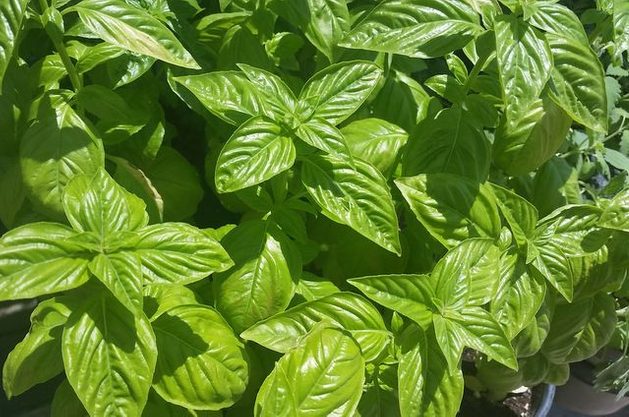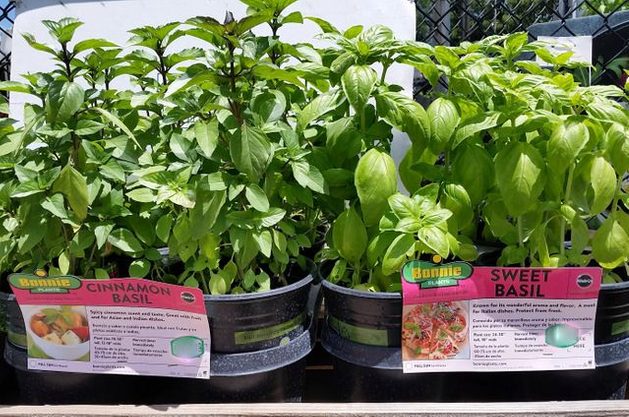5 Basil Varieties For Your Herb Garden
Updated: Apr. 24, 2020
Already growing sweet basil to make pesto? Try these other basil varieties to add distinctive flavor to your home-cooked recipes or salads.
Basil is one of the most common herbs around, found in cuisine around the world. Recipes almost always call for fresh basil, since dried basil loses its flavor quickly. That means even amateur chefs will benefit from having some basil growing in their garden or on a sunny windowsill. But what type of basil should you grow? There are dozens of basil varieties available, with different flavors and uses. What you grow depends on the kinds of dishes you like to prepare. Here are five basil varieties that everyone can grow and enjoy.

Sweet Basil (Ocimum basilicum). This is the standard basil people think of for Italian foods, pesto, and more. It has wide, bright green, cup shaped leaves, and a green stem. It’s also sometimes known as Italian basil or Genovese basil (though some consider Genovese a separate variety, with a stronger flavor). Sweet Basil loses much of its flavor once cooked, so it’s usually used fresh in recipes. Lettuce Leaf Basil (O. basilicum ‘Crispum’) is similar in flavor, but its large leaves make it ideal for use in salads.
Thai Basil (O. basilicum var. thyrsiflora). Many other basil varieties are cultivars of sweet basil, including Thai basil. However, it’s been cultivated for centuries to create a very different flavor palate, one that’s reminiscent of anise or licorice. Thai basil, as its name suggests, is used more frequently in Asian dishes. It withstands heat better than sweet basil, so may be added before cooking. It’s also served fresh with soups like Vietnamese pho or in salads.
Cinnamon Basil (O. basilicum ‘Cinnamon’). Another cultivar of sweet basil, cinnamon basil has notes of – you guessed it – cinnamon. It’s commonly used in Indian and Asian cuisine, and goes well with fruits like citrus. It also works well in teas and baked goods.

Lime (O. americanum) or Lemon Basil (O. × africanum). Not all basil varieties come from sweet basil. Lime basil is a separate species (not native to the Americas despite the confusing botanical name), with a fresh citrus taste in addition to traditional basil flavor. Lemon Basil is a cultivar with similar citrus flavor. Some gardeners grow the two together and use them both in recipes.
Holy Basil (O. tenuiflorum syn. O. sanctum). Also known as tulasi or tulsi in its native India, holy basil has a wide array of uses around the world. In India itself, it’s most often used medicinally or in religious ceremonies (it’s a sacred plant in Hinduism), or brewed as a tea. Thai cuisine uses holy basil in recipes, usually cooked rather than fresh. Holy basil is often described as having a peppery taste and aroma, and can be bitter when raw.